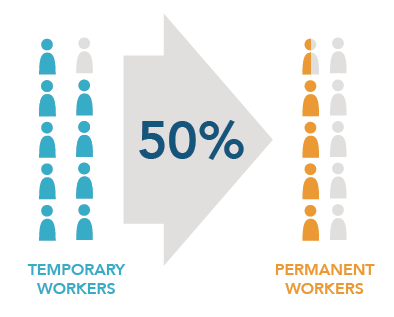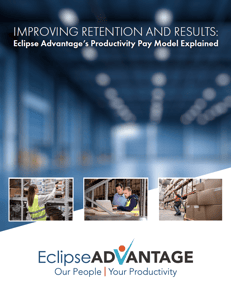Case Studies
Search
Solutions
Industries

Automotive Manufacturer Scales Staffing by 200+ Workers
See how Eclipse Advantage helped USUI overcome a labor shortage, reducing turnover by 78% and fully stabilizing operations with a dedicated, community-driven hiring approach.

AER-FLO Fills 50+ Roles and Launches a Second Shift
With Eclipse Advantage's onsite staffing model, AER-FLO Sports built a fully staffed second shift, improving reliability, streamlining hiring, and expanding support across all three shifts.

Retail Distribution Center Cuts Container Backlog by 70%
See how Eclipse Advantage transformed peak-season chaos into a streamlined success, unloading 12M+ cases in 8 months using a team-based productivity pay model that boosted efficiency and retention.

National Drugstore Chain Achieves 90% Retention Amid Pandemic
Eclipse Advantage ensured a seamless, COVID-era startup for a major retailer combining hourly staffing with team-based pay to boost productivity, reduce costs, and transition half the workforce into permanent roles.

1.600 Hired in 30 Days: Zip Sortation Launch Hits Holiday Deadline
Eclipse Advantage rapidly staffed and trained 1,600 workers across four new zip sortation centers surpassing productivity targets and processing over 2.4M packages monthly with 99.8% accuracy.

Driving Workforce Success for a National Food Manufacturer
See how Eclipse Advantage built a 10+ year partnership with a national food manufacturer by improving retention, reducing absenteeism, and supporting over 2,000 workers across cold-production facilities nationwide.

Eclipse Advantage Cuts Workplace Accidents by 40% with Proactive Safety Strategy
Learn how Eclipse Advantage's Behavioral-Based Safety Observations program reduced OSHA-recordable accidents by 40%, lowered workers' compensation costs by 25%, and increased employee engagement.
White Papers

Improving Retention and Results: Eclipse Advantage’s Productivity Pay Model Explained
The supply chain industry is under pressure. Labor shortages, high turnover rates, and growing demand for faster, more efficient service are making it increasingly difficult to maintain operational efficiency.
